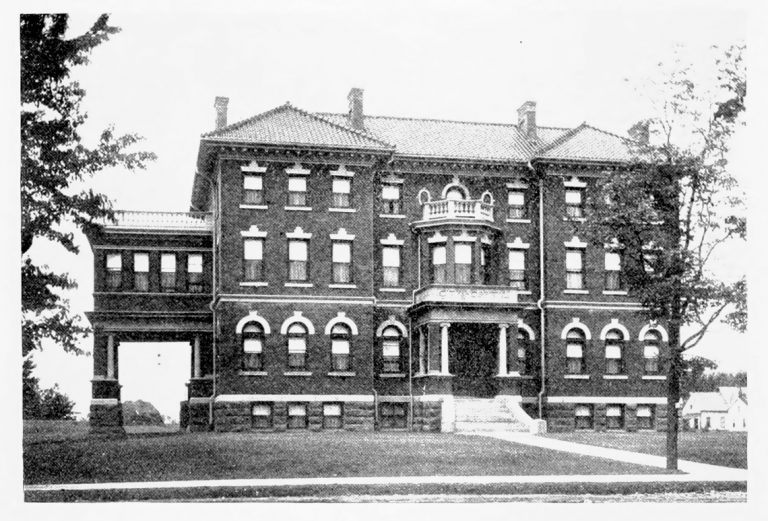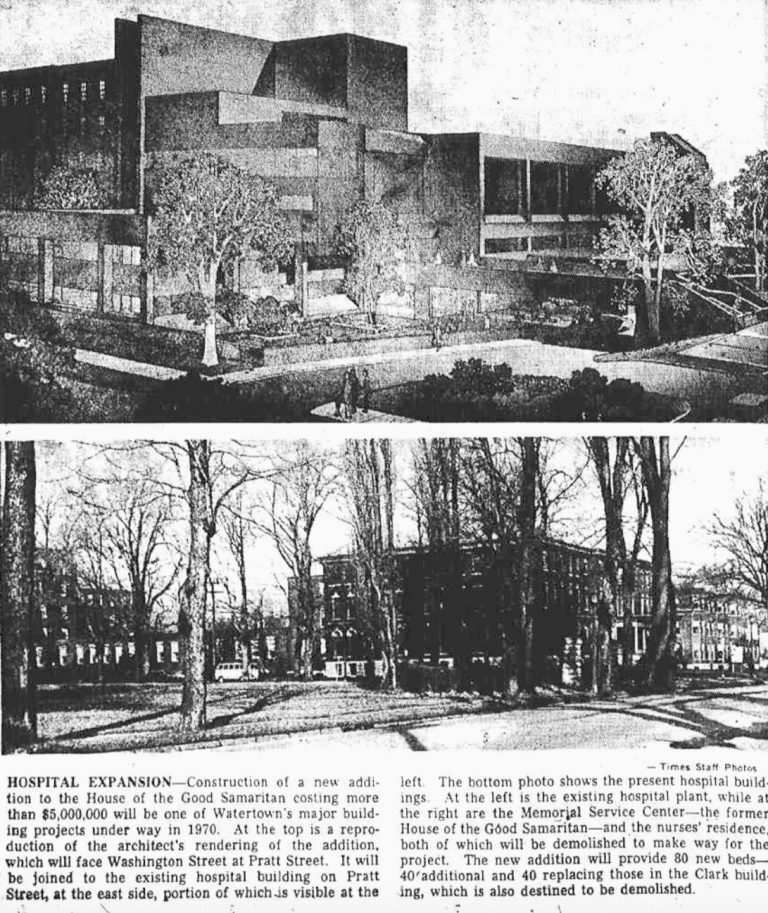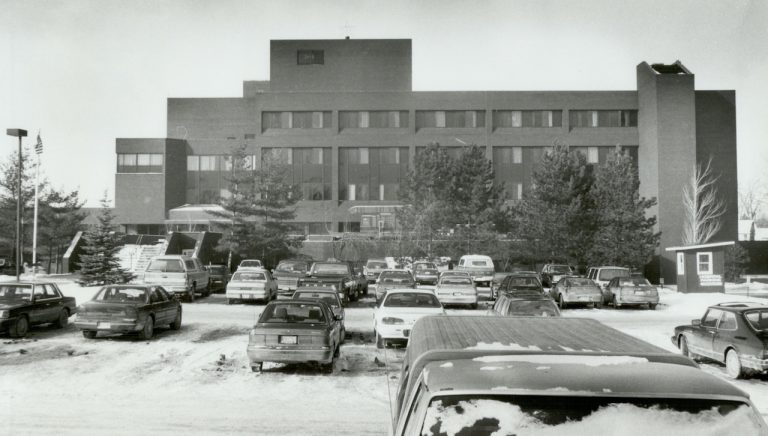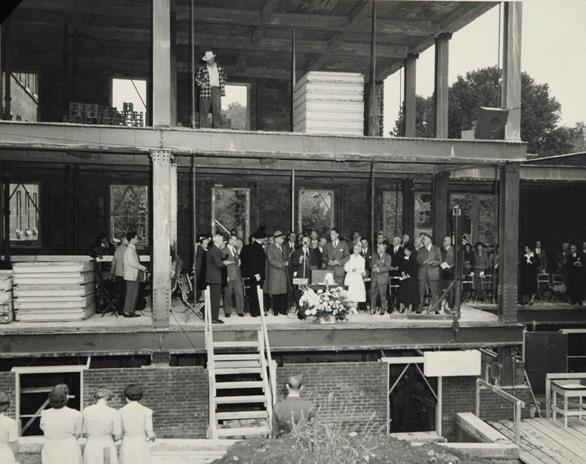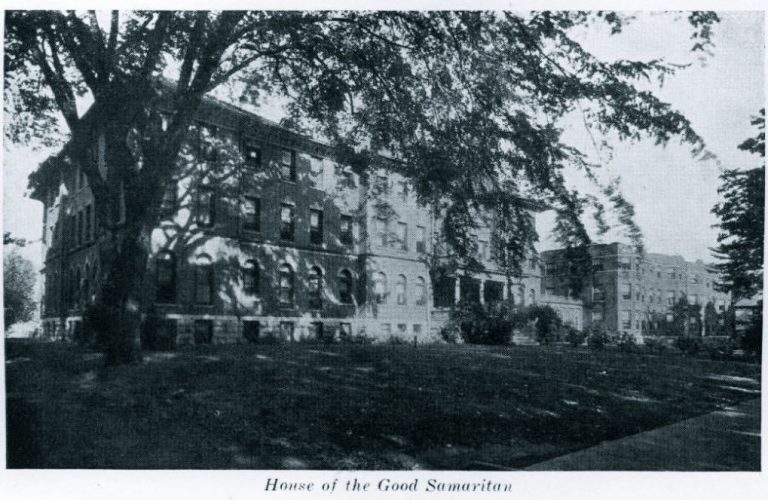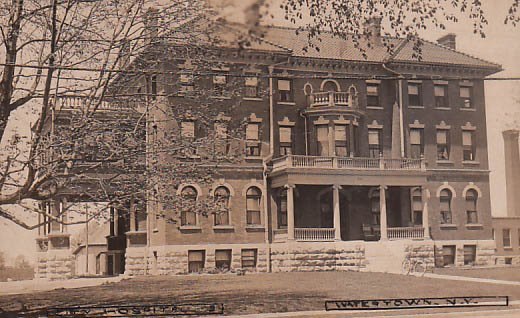House of the Good Samaritan, often referred to as City Hospital in its early years, eventually became Samaritan Medical Center.
It would be an understatement to say the House of the Good Samaritan has undergone some changes since its creation in 1881. Founded by ministers of Trinity and Grace churches, the first hospital would be located in a rented house on the corner of Ten Eyck and Holcomb Streets, which is an apartment building today.


The Watertown Daily Times would write the story behind how the hospital, predominantly referred to as “City Hospital” despite its board of trustees naming it The House of the Good Samaritan from the start, and how its beginning came about—
A few ladies had assembled, in a parish work room, for the purpose of preparing clothing for an old invalid woman, without support save a small pension received through a son who died in the army. The rector of the parish had procured her admission to St. Luke’s hospital, Utica, her pension being taken in part payment for her care, and the ladies were engaged in getting her ready to enter that institution.
The conversation naturally turned on the need of such a charity in Watertown, there being in institution of the kind nearer than Syracuse or Utica, and the needy sick, not only of the city, but of all the populous section for many miles around, have no resource but the almhouse, from which the better class of poor naturally shrink, and which, however comfortable for the well, is certainly no place for the sick.
The ladies discussed the feasibility of an effort to found (sic) a hospital, and ended by appointing a committee to confer with other ladies on the subject. This committee met with so much encouragement, that a subscription paper was circulated, and in a very short time several hundred dollars were pledged.

According to the Samaritan Medical Center‘s website, “When Reverends Russell A. Olin of Trinity Church and Albert Danger of Grace Church and five of their laymen met on June 13, 1881, charity alone was on their mind.” They would procure the rent of the large house on the corner of Ten Eyck and Holcomb Streets to utilize as a hospital that could bed ten patients onsite.
In its first five months, the “City Hospital” cost under $125 a month to operate, with most of its furnishings donated and the physicians providing their services for free. Despite the apparent early success, not everyone was happy. According to one account in the Watertown Daily Times, “an old broken-down tramp” happened upon the Charles A. Hungerford address and proceeded to inquire after a knock at the door if it was the city hospital. Mr. Hungerford gave him all of four seconds to get off the street.
On September 29, 1881, many residents would submit a letter to the Times with their objections to a hospital in their neighborhood. Quoted in part, it read–
TenEyck (sic) Street is now among the best of the city. The establishment of a hospital upon it, would of necessity bring it into disrepute as a place of residence, and greatly diminish the value of property in its vicinity. We cannot believe that one of you would knowingly do us an injury; yet in carrying out your design, you will detract largely from the value of our real estate and thereby do us a direct pecuniary harm.
Add to this the danger of the contagion to which ourselves and families will be constantly subject, and you do us an injury that cannot be measured in dollars and cents.

The objections did nothing to deter the hospital’s meager beginnings as their board of trustees happened to be prominent citizens of the city, including H. H. Babcock. It would be sixteen more years before the House of the Good Samaritan would actually build its first hospital, at which time the association actually owned its then current location that neighboring residents resented.
On January 18th of 1898, the board of trustees made known its intent to build a new hospital now, stating it had outgrown its current facilities for a city of Watertown’s size, not to mention the outlying areas that it served as well. On April 14th, 1898, the Watertown Daily Times would announce–
The hospital will have accommodations for about 50 patients, be heated and ventilated in the most approved manner, and be equipped with a surgical ward complete in every particular. This will be known as Gilderoy Lord surgical ward, for which Mrs. Lord bequeathed about $2,700 to the trustees to provide for, in memory of her husband, thus rearing a monument of the best kind and perpetuating the name forever of one of our most prominent citizens.
About $3,500 was bequeathed by Mrs. Fannie L. Bennett to the trustees to assist in erecting the new hospital.
The building will be located on the corner of Washington and Pratt Streets, two lots valued at $2,500 having been purchased and recently given to the trustees for building a site by Mrs. John B. Taylor (Emma Flower Taylor). This generous gift, coming as it does from one who has already been most liberal towards this institution, wins for her the sincere thanks of everyone.
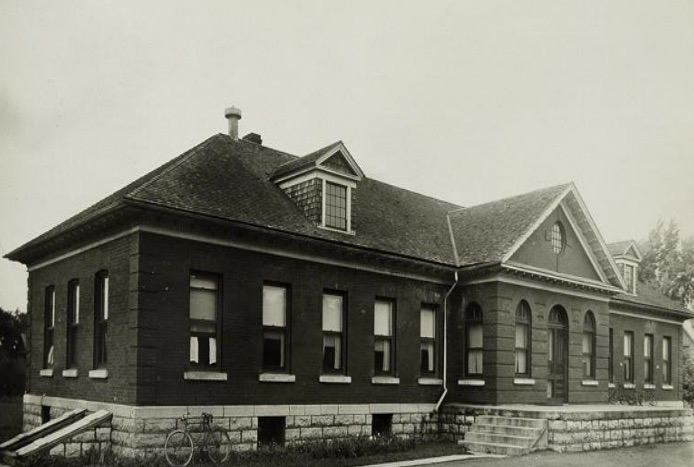
In 1905, Emma Flower Taylor gifted the House of the Good Samaritan the Taylor building, which was originally intended as a contagious hospital for the care of those with communicable diseases. The board of the House of the Good Samaritan declared it too close to the hospital and three years later converted it to a maternity department, which led to Emma Taylor establishing the Bide-A-Wee house on Bradley Street during the interim.
After being refitted, the Taylor building would re-open in 1911 as a maternity ward capable of catering to 10 patients, 5 in private rooms and 5 in the ward. Upon further expansion years later, the facility would be used for laundry and was later converted to an extended care ward and finally a laundry and maintenance shop before being demolished in 1972, making way for further expansion of the House of the Good Samaritan.

By June, nearly $16,000 of an estimated $60,000 would be raised for the construction of the facility, including a $5,000 gift from the Hon. Theodore Canfield of Sackets Harbor. Many businesses would also offer a percentage of sales over the months involving the fund-raising effort.
In early 1899, $15,000 would be given, $5,000 apiece, from Mrs. Roswell P. Flower, her daughter, Mrs. John B. (Emma) Taylor, and Mrs. E. S. Goodale. Construction would be underway, with completion nearing. It would be expected to open by July or August.
In 1911, the hospital would undergo expansion, adding onto the original and expanding to nearly Pratt Street. It was designed by architect Albert W. Skinner, who worked on many city schools including Academy Street, and constructed by C. D. Hodge & Co. of Watertown.

In 1926, the hospital would plan to remodel the nurses’ home. As reported by the Watertown Daily Times–
Immediate steps will be taken to rebuilt and enlarge the nurses’ home at the House of the Good Samaritan, C. W. Valentine, chairman of the board of trustees announced today. This wad decided upon at a meeting of the trustees held April 6. It is expected to have the work completed within a year.
The plans include the remodeling of the present nurses’ home, carrying the wall of this building up to so as to provide full three stories in place of the tow and a half stories with gable roof.
The new section extends the building to the north so that the entire front will be more than twice the length of the present one. An ell will extend westerly from the north end of this front section, and altogether the building will be more than three times as large as the present.
Included in the building will be class roos, demonstration room, dietetic laboratory, chemical laboratory, special laundry and sewing room for nurses and a gymnasium. There will also be general and private reception rooms, a nurses’ infirmary with adequate lavatories and bathrooms.

On January 10, 1951, after ten years of planning and five years of a formal financial campaign to raise funds, the new House of the Good Samaritan hospital, situated on Pratt Street, would open. Costing $1,652,000, the new hospital would have a bed capacity of 192 and all the latest equipment advancements. Incidentally, the opening of the new hospital was a week after the new Watertown High School opened further up Washington Street. The two structures alone would amount to $3,500,000 of improvements for the city.
Henry H. Babcock, who had been an original trustee of the hospital when it was formed, had worked hard to build the new hospital and hastened its construction due to the rising construction costs post-WWII. The Times would remark on his contributions–
Those were long days that Mr. Babcock devoted to the hospital. After construction started, his interest rather than diminishing, increased, and hardly a day went by from the start of construction in March 1949 until his death (Aug. 1950) that he did not devote considerable of his energy to construction problems which someone had to handle in behalf of the hospital principals.


In 1970, the House of the Good Samaritan would undergo its most costliest and biggest expansion yet, with costs estimated in the $5,000,000 range. The Watertown Daily Times would report on January 3, 1970–
House of the Good Samaritan Expansion Plans Unveiled; Cost Will Top $5 Million
Plans for a multi-million dollar construction project as extensive renovations and additions to the present plant of the House of the Good Samaritan, providing 80 new beds, 40 of them additional, and expansion of existing departments have been announced.
Forty of the new beds will replace those in the existing Clark Building which, as part of the project, will be demolished, along with the 70-year-old Memorial Service Center–the former House of the Good Samaritan–and the nurses’ residence, both located on Washington Street.
Part of the financing was to be state loans, and the new facilities included new emergency rooms, an X-ray suite, laboratory facilities, and a rehabilitation center. The new construction would once again have the main entrance facing Washington Street with parking in the front, necessitating the demolition of the nurses’ home and adjoining former hospital, which would then serve as the Memorial Service Center and the Clark building.

The 1990s would see further expansion of the House of Good Samaritan. In 1990, an $8.5-million project was undertaken to add a fifth floor to the hospital’s main building, along with renovating the existing fifth floor of its other building, which opened in 1951. Funding for the expansion would come from community contributions, existing hospital funds, and a mortgage for the new fifth floor. The additions would also include two nurseries.
1998 would see a $2.8-million maternity project that would double the 8,500 sq. ft. maternity in size.
2000s see $61,000,000 Expansion
In 2007, now known as Samaritan Medical Center, the hospital would seek its most significant expansion: $61,000,000 to build a 400-vehicle parking garage and a four-story addition, fronting Washington Street, a portion of its previous parking lot. The addition would house the emergency department, operating suites, intensive care, and medical and surgical units.
As in previous expansions, the hospital would receive partial funding via donations from local businesses and organizations. Samaritan Medical Center received approval to begin work on phase I, which was the parking garage, which cost $5.9 million. The expansion would be defended as part of a strategic plan to address the North Country’s growing population due to Fort Drum.
The bulk of the expansion, $46.5 million, would begin the following spring. The third phase, targeting renovations at $8.6 million, would take an estimated three years to finish and not start until 2011.



A Center for Women and Children recently opened at Samaritan Medical Center. Construction was initially projected at $4.6 million and began in January 2017, which involved the third floor of the Pratt Building. Car-Freshner Corporation of Watertown, NY, donated significantly to the project, and Samaritan Medical Center renamed the project the Car-Freshner Center for Women and Children. The center opened in August of 2019.






